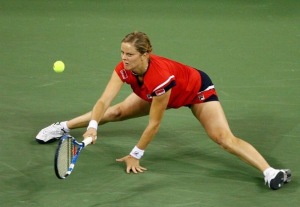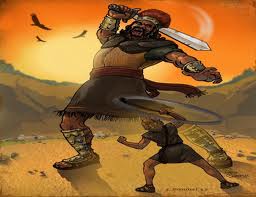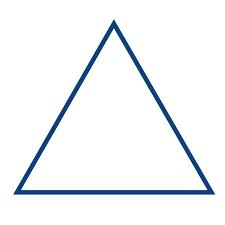Tennis is an expensive sport. Between the cost of rackets, shoes, strings, balls, coaching, entry fees, travel and club membership fees, the expenses can run into thousands of dollars. Is it all worthwhile?! Depending on your goals and commitment it may be. It is disheartening, however, to invest so much in developing as a tennis player and not get much out of it simply because you did not put in the extra effort.
Unfortunately, a lot of parents rely only on individual lessons in order to develop their kids' games. This is simply not enough. Although many aspects of the game can be taught, there are numerous components that can only be LEARNED (i.e. discovered).

Your coach can tell you how to hold the racket but only you can determine how to use the stroke in a match. Many players, however, never really learn how to "teach themselves" or how to "self-soothe" when things don't go their way in a match. They rely on constant coaching in all aspects of the game and, therefore, become automatons without any artistry or true passion for the sport.

In addition to not being self-sufficient, many players end up playing their coaches' (or parents') version of the sport rather than their own. Furthermore, since coaches are, for the most part, authority figures, a lot of the workouts follow the "do as I say not as I do" routine. Often times, and depending on the tone and message, this can result in burn-out, dissatisfaction or outright tanking ("just to get back" to the parent/coach).
On the other side of the equation are the players who do things completely on their own without any outside guidance. These players possess a great passion for the game and practice, whether by choice or by necessity, a lot on their own and in their own way. Of course, what they lack sometimes is structure and, perhaps, a good grasp of the fundamentals. Some of these player become quite good in their own right although it's tough to say whether they have maximized the potential.
I believe that the best way to grow into an accomplished player would be include components from both "classes" of players: those who rely on private coaches and those who learn the game on their own. In effect, this becomes "tennis on a budget". By having some structure, the players are assured that they have proper fundamentals (what's "proper" is debatable). However, by doing things on their own or with little supervison, the players can also maintain the artistry and independence to develop one's own sense and place as a tennis player. After all, the players are not playing "for their coaches or parents" but for themselves.
Practically speaking tennis on a budget is a blend that not only spreads the pressures and responsibilities but also minimizes the costs. In addition, the players are forced to become honest with their intentions. If they are passionate about the game, they will do things on their own in order to improve. If they are not, then no-harm, no-foul but "at least we're not fooling ourselves" or using tennis as an excuse to not study or pursue some other objectives. Although everyone's finances and goals are different, a developing player (e.g. 14+) can easily follow a disciplined routine (such as one outlined in the example below) and still manage to attain a reasonable level of success:
1. MON: 2 hours on the ball machine (FH; BH; Volleys); 30 min running/jumping rope; 30 min abs/weights. On the ball machine, work on power ("hit the ball like it owes you money"), consistency and placement. Move the ball machine around the court and learn to hit from anywhere to anywhere. Maintain good, light footwork in between shots with particular emphasis on the 3-4 "dance" steps immediately before the shot.
2. TUE: 1.5hrs sets/points (can be a match or some adult/junior league); 30 min serves. 30 min of bike; 30 min abs/weights
3. WED: 1 hour lesson; 1 hr points/sets. 30 min running; 30 min abs/weights.
4. THU: 1 hour clinic/group-split lesson; 1 hour on ball machine. 30 min jumping rope; 30 min bike.
5. FRI: 1 hour sets; 30 min serves. 30 min stretching.
6. SAT/SUN: tournament. NOTE: I ALWAYS recommend that the player does not rely solely on the matches provided by the tournament (i.e., don't just play your match, get in your car and drive home). Try to find a handful of players againt whom you can play a couple of practice sets AFTER the tournament match; go for a run; jump rope; do some drills with another player. Get the most out of that tennis-specific environment particularly if you're from an area that doesn't have a lot of high-caliber players to practice against.
Again, this is just an example of a "clean" routine where the player is receiving just enough instruction so that he doesn't get too far off track but also sufficient independence in order to develop the game on his own and learn how to make adjustments independently when things go wrong in a match. Of course, the foregoing requires some dedication and discipline from the player but, then again, that's the point. In addition, there is a concern in some schools of thought that without constant instruction, the player will lose his stroke (or develop bad ones). Another school of thought, however, believes that the player is more likely to pay attenion in that 1-1.5hrs of instruction than if he were to participate in private lessons day-after-day. One cannot discount teenagers' ability to "tune things out" when they hear the same thing over and over again.
Will this schedule produce future Nadals and Federers? Maybe, maybe not. But it will certainly result in more passionate players - in player who take charge of their games - as well as people who are capable of taking charge of their lives and being more disciplined in all pursuits.
 Tuesday, October 18, 2011 at 05:22AM
Tuesday, October 18, 2011 at 05:22AM  CAtennis
CAtennis 






